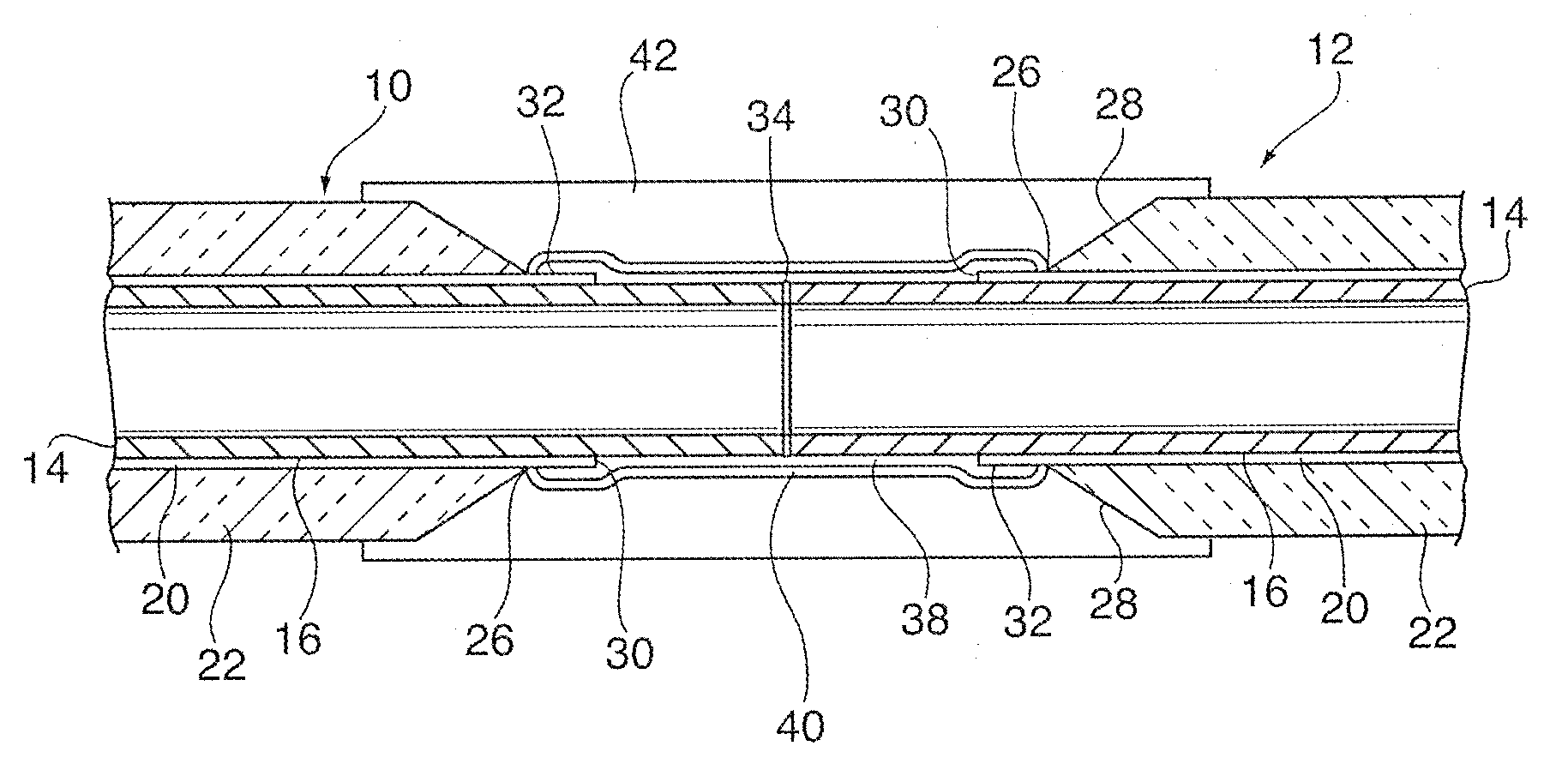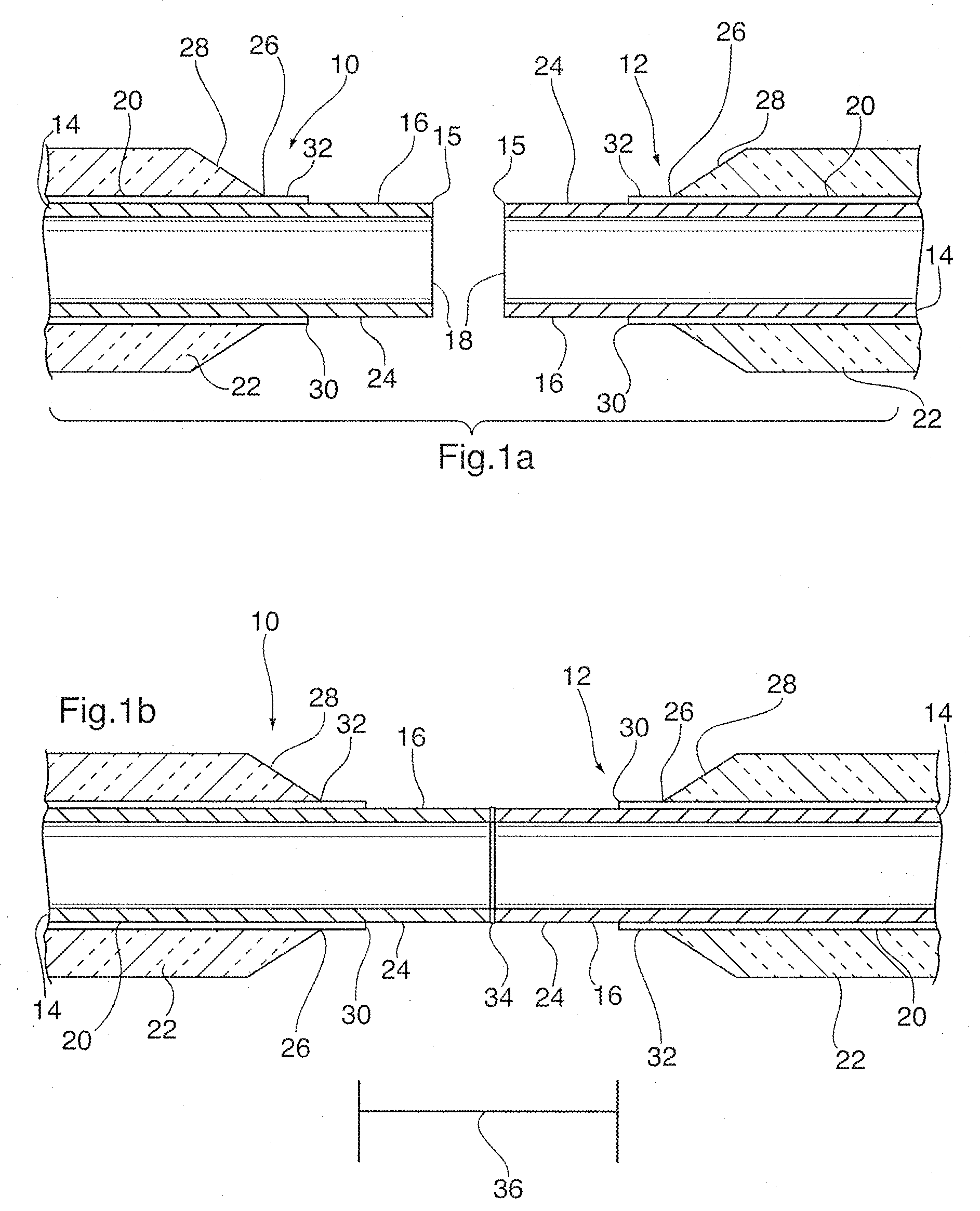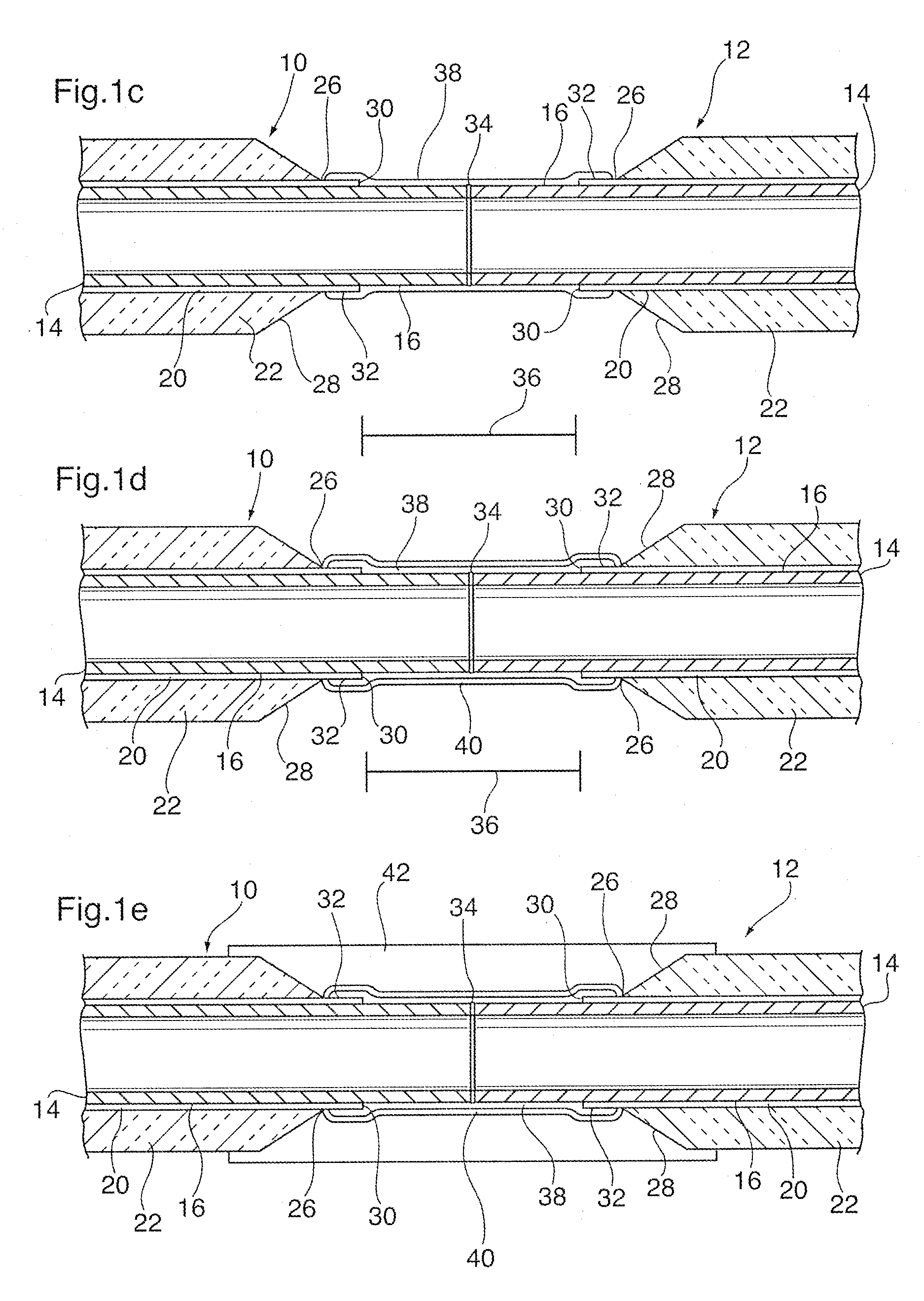Low temperature method and system for forming field joints on undersea pipelines
a pipeline and field joint technology, applied in the direction of epoxy resin adhesives, corrosion prevention, adhesive types, etc., can solve the problems of high cost, significant time requirement, and discontinuous structur
- Summary
- Abstract
- Description
- Claims
- Application Information
AI Technical Summary
Benefits of technology
Problems solved by technology
Method used
Image
Examples
example 1
[0082]Two sections of steel pipe were provided, having a nominal wall thickness of 14.3 mm and a nominal diameter of 273.1 cm. The steel pipes each had a factory-applied FBE corrosion protection coating having a glass transition temperature of 105-107 degrees Celsius, a thickness of about 800 micrometers and a polystyrene insulation layer having a thickness of about 55 cm. The corrosion protection coating was provided directly over the outer surface of the steel pipe and the polystyrene insulation layer was provided directly over the corrosion protection coating. The pipe sections had bared end portions about 15 cm in length, with the ends of the insulation layer being chamfered. The corrosion protection coating extended beyond the toe of the chamfer by about 10 mm.
[0083]The bare end portions of the steel pipes were pretreated by blast cleaning to a grade of Sa 2.5, a surface cleanliness rating of 1-2, and a surface roughness Ry (maximum peak-to-valley roughness height) of about 40-...
example 2
[0090]Two sections of steel pipe were provided, having a nominal wall thickness of 14.3 mm and a nominal diameter of 273.1 cm. The steel pipes each had a factory-applied FBE corrosion protection coating having a glass transition temperature of 105-107 degrees Celsius, a thickness of about 800 micrometers and a polypropylene insulation layer having a thickness of about 55 cm. The corrosion protection coating was provided directly over the outer surface of the steel pipe and the polypropylene insulation layer was provided directly over the corrosion protection coating. The pipe sections had bared end portions about 15 cm in length, with the ends of the insulation layer being chamfered. The corrosion protection coating extended beyond the toe of the chamfer by about 10 mm.
[0091]The bare end portions of the steel pipes were pretreated by blast cleaning to a grade of Sa 2.5, a surface cleanliness rating of 1-2, and a surface roughness Ry (maximum peak-to-valley roughness height) of about...
PUM
| Property | Measurement | Unit |
|---|---|---|
| Temperature | aaaaa | aaaaa |
| Temperature | aaaaa | aaaaa |
| Temperature | aaaaa | aaaaa |
Abstract
Description
Claims
Application Information
 Login to View More
Login to View More - R&D
- Intellectual Property
- Life Sciences
- Materials
- Tech Scout
- Unparalleled Data Quality
- Higher Quality Content
- 60% Fewer Hallucinations
Browse by: Latest US Patents, China's latest patents, Technical Efficacy Thesaurus, Application Domain, Technology Topic, Popular Technical Reports.
© 2025 PatSnap. All rights reserved.Legal|Privacy policy|Modern Slavery Act Transparency Statement|Sitemap|About US| Contact US: help@patsnap.com



